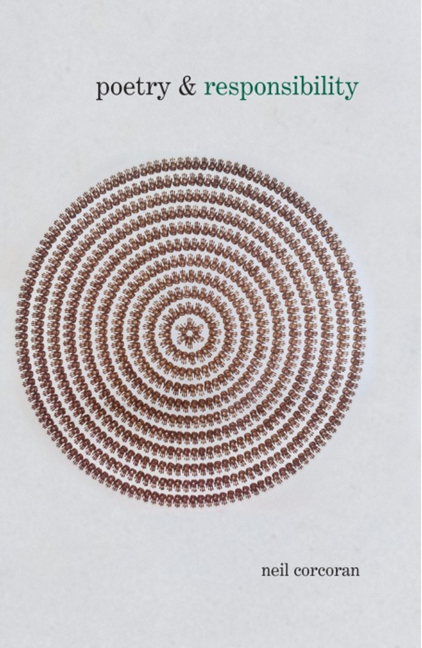Book contents
- Frontmatter
- Dedication
- Contents
- Acknowledgements
- Introduction: The Responsibilities of Poetry
- PART I
- PART II
- 4 W. B. Yeats's ‘Among School Children’: The Poem and its Critics
- 5 Question Me Again: Reflections on W. B. Yeats and Seamus Heaney
- 6 The Same Again? Louis MacNeice's Repetitions
- 7 The Celebration of Waiting: Moments in the History of Modern Irish Poetry and the Visual Arts
- 8 The Pools of Shiloh: On Paul Muldoon's ‘Our Lady of Ardboe’
- PART III
- Notes
- Index
6 - The Same Again? Louis MacNeice's Repetitions
from PART II
- Frontmatter
- Dedication
- Contents
- Acknowledgements
- Introduction: The Responsibilities of Poetry
- PART I
- PART II
- 4 W. B. Yeats's ‘Among School Children’: The Poem and its Critics
- 5 Question Me Again: Reflections on W. B. Yeats and Seamus Heaney
- 6 The Same Again? Louis MacNeice's Repetitions
- 7 The Celebration of Waiting: Moments in the History of Modern Irish Poetry and the Visual Arts
- 8 The Pools of Shiloh: On Paul Muldoon's ‘Our Lady of Ardboe’
- PART III
- Notes
- Index
Summary
The enlarged edition of the excellent Princeton Encyclopedia of Poetry and Poetics published in 1974 makes Louis MacNeice prominent in its entry for ‘repetition’. One of the many kinds of repetition it catalogues is when the verses of a poem are linked by the repetition in the opening line of each new one of the final word of the previous one, and the example given is ‘Leaving Barra’. That exquisite poem, written in 1937, was published in MacNeice's unclassifiable potboiler, would-be travel book I Crossed the Minch in 1938, where he tells us that he did in fact write it on board the boat Lochearn as he left the Hebrides. The poem does what the Encyclopedia says it does, as the word ‘island’ is picked up from the first quatrain by the second, ‘garbage’ from the second by the third, and so on through the poem's thirteen verses, in a way musically mimetic, it seems, of the mind in progress – self-scrutinizing, self-corrective, advancing hesitantly but keeping moving – while also sustaining an ear-delighting system of aural patterning.
In fact, MacNeice's systems of repetition in this poem are more varied than the encyclopedia tells us, since the poem features other kinds of repetition too: when the phrase ‘phantom hunger’, for instance, at the end of the fifth verse, is separated out into its parts, so that both ‘hunger’ and ‘phantom’ form end-words of lines in the next; when words are echoed within lines – ‘The belief that is disbelieving’ in the seventh verse, and ‘Loving the rain and the rainbow’ in the eighth; and when the mode of repetition that is alliteration operates in ‘Wake with the knack of knowledge’ in the tenth, with its sudden knock of Anglo-Saxon metre.
- Type
- Chapter
- Information
- Poetry & Responsibility , pp. 92 - 106Publisher: Liverpool University PressPrint publication year: 2014



